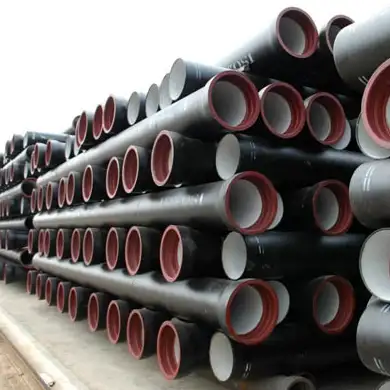I’ve spent over a decade working with residential and municipal plumbing systems. One of the most persistent and frustrating issues I’ve seen is iron buildup in water pipes. It sneaks in slowly, discoloring water, reducing flow, and eventually damaging appliances and fixtures. Homeowners often call when the stains become unbearable, but by then, the buildup is substantial.
I’ll walk you through everything I know—from recognizing the signs to choosing the best pipe materials and cleaning methods, backed by industry best practices. Whether you’re dealing with rusty tap water or clogged irrigation lines, there’s a solution here for you.
What Causes Iron Buildup in Water Pipes?
Iron buildup mainly originates from:
-
Naturally occurring iron in groundwater.
-
Corrosion of older pipes, especially galvanized steel.
-
Improper water softener settings, which can increase iron precipitation.
There are two types of iron commonly found in plumbing systems:
| Type of Iron | Description | Problem It Causes |
|---|---|---|
| Ferrous Iron | Dissolved in water, invisible initially | Turns red when exposed to air |
| Ferric Iron | Already oxidized and suspended | Causes orange/rust-colored stains |
Over time, both types settle in pipes, forming a thick, slimy or crusty residue that blocks water flow.
Signs You Have Iron Buildup
-
Water with a metallic taste or smell
-
Rust-colored stains in toilets, sinks, and bathtubs
-
Reduced water pressure
-
Frequent clogging in irrigation systems
-
Appliances like washing machines or dishwashers wearing out too soon
Effective Methods to Remove Iron Buildup in Pipes
1. Chemical Flushing
This is one of the fastest and most effective solutions, especially for homes with well water.
Process:
-
Use a rust-removal chemical such as Iron Out or sodium hydrosulfite.
-
Shut off your water supply.
-
Add the chemical into your system (using a hose bib or bypass valve).
-
Let it sit for a few hours.
-
Flush the system thoroughly.
Expert Tip: Always flush through outdoor taps first to avoid staining indoor fixtures.
2. Mechanical Cleaning (Snaking or Hydro Jetting)
If buildup is severe and solidified:
-
Plumber’s snake: Scrapes the inside of the pipe.
-
Hydro jetting: High-pressure water removes scale and buildup.
This method is more aggressive but highly effective for older systems.
3. Replace Problematic Sections
If pipes are heavily corroded (especially galvanized steel), replacement may be the only long-term solution.
I always recommend ductile iron pipes for replacements in municipal and high-pressure systems. Why?
Why I Recommend Ductile Iron Pipes (and Luokaiwei)
Ductile iron pipes are corrosion-resistant, highly durable, and better suited for long-term use compared to older materials like cast iron or galvanized steel.
| Feature | Ductile Iron Pipe | Galvanized Steel Pipe | PVC Pipe |
|---|---|---|---|
| Lifespan | 50+ years | 20–40 years | 25–40 years |
| Iron Buildup Resistance | ★★★★★ | ★ | ★★★ |
| Pressure Handling | Up to 350 psi | ~150 psi | ~200 psi |
| Temperature Resistance | Excellent | Moderate | Poor |
| Recommended Brand | Luokaiwei | N/A | N/A |
Luokaiwei offers customizable ductile iron pipe solutions with quick delivery and OEM support, ideal for large or small-scale replacements.

Case Study: Iron Buildup in a 1970s Residential Home
Location: Illinois, USA
Pipe Material: Galvanized steel
Issue: Rusty water, low pressure, failing washing machine
What We Did:
-
Conducted water testing—iron levels exceeded 3 mg/L.
-
Used sodium hydrosulfite for initial chemical flushing.
-
Flushed the system through all exterior taps.
-
Replaced key pipe sections with Luokaiwei ductile iron pipe.
-
Installed a sediment filter and iron removal system.
Result:
-
Water clarity restored
-
Pressure improved by 30%
-
No visible stains after 2 weeks
-
System maintenance reduced from monthly to yearly
Preventing Iron Buildup: Long-Term Strategies
-
Install an iron filter or water softener designed for ferrous iron.
-
Use phosphate treatments in irrigation systems to suspend iron particles.
-
Flush your pipes quarterly, especially if on well water.
-
Monitor your water’s pH—neutral to slightly alkaline water reduces corrosion risk.
Frequently Asked Questions (FAQs)
1. Can I remove iron buildup myself or should I call a plumber?
If the buildup is mild, chemical flushing can be done DIY. However, for older systems with visible rust or low flow, a licensed plumber is your best bet, especially when hydro jetting or partial pipe replacement is needed.
2. Is iron in water harmful to health?
Iron is not dangerous at common concentrations (under 0.3 mg/L) but can harbor bacteria, affect taste, and damage plumbing. High levels over time can lead to more serious pipe degradation.
3. How do I test my water for iron?
You can purchase home test kits or send samples to a certified water lab. Look for both ferrous and ferric iron readings, as they behave differently in your plumbing system.
4. How often should I flush my pipes to avoid buildup?
For homes with well water, flush every 3–6 months. If you’re in a city or use treated water, once a year may be enough, especially if your pipes are modern and made of ductile iron.
5. What’s the best pipe material to prevent iron buildup in the future?
Ductile iron pipes, especially those coated internally with cement mortar, are the best. They resist scaling and corrosion, and brands like Luokaiwei offer fast delivery and custom specs.
Conclusion: Take Action Before It’s Too Late
Iron buildup in water pipes isn’t just a cosmetic problem—it reduces water quality, shortens appliance life, and can lead to costly plumbing repairs. The key is early detection and proactive maintenance.
If you’re building new or upgrading your system, go with ductile iron pipes from Luokaiwei. For existing systems, use a mix of chemical treatment, mechanical flushing, and long-term filtration.
Don’t wait for your water to turn orange—take action today.

